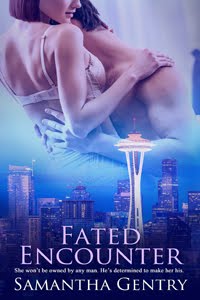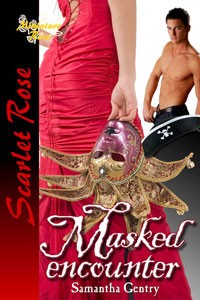We've all heard of the famous (or infamous) Mata Hari,
executed by the French in 1917 as a German spy. And Nathan Hale, the American
Revolutionary War spy who said, "I only regret that I have but one life to
lose for my country," right before the British hanged him in 1776 at age twenty-one.
But history is filled with spies whose names are virtually
unknown. In most instances anonymity is
vital to success—an unknown name and an appearance that blends in with everyone
else rather than the flamboyance of the fictional James Bond.
I read a brief mention about a female spy from World War II
who died in August 2011 at the age of ninety-eight, someone I had never heard
of, and that led me to a list of ten spies who are not household names.
1) Nancy Wake:
Flirted her way through checkpoints and karate chopped a Nazi guard to
death.
This is the female spy mentioned above who survived her World
War II spy assignments and lived to be ninety-eight years old. In the 1930s, a
young Australian journalist went to Germany to report on the rise of fascism
and interview Hitler. The atrocities she witnessed changed her life forever.
She settled in France and with the Nazi invasion in 1940 she joined the
resistance movement, helping thousands of Jewish refugees and Allied servicemen
escape to Spain. In 1943, with the Nazis closing in on her, she escaped to
Spain and later to Britain where she convinced agents to train her as a spy and
guerilla operative. In 1944 she parachuted into France leading a band of seven
thousand resistance fighters where she coordinated guerilla activities prior to
D-Day. She rose to the top of the Gestapo's most wanted list. She killed a
German guard with one karate chop to his neck, executed a female German spy,
shot her way through roadblocks, and biked seventy hours through enemy held
territory to deliver radio codes for the Allies.
2) Boris Yuzhin:
Used a camera concealed in a cigarette lighter to leak KGB secrets to
the FBI.
In July 1975, the KGB sent Boris to San Francisco where he
posed as a visiting scholar and later as a news reporter. His indoctrination
said America was the enemy, but to his surprise he felt right at home and
eventually grew to question his own country's policies. By 1978 he had become a
double agent, supplying information about KGB operations in California to the
FBI. His career as a double agent ended in 1986 when Aldrich Ames, the infamous
CIA officer who had been spying for the Soviets, identified Boris which landed
him in a Siberian prison for six years at a time when Soviet traitors were
almost always executed. Boris is still
alive and living in Santa Rosa, California, north of San Francisco.
3) Marthe Cnockaert: Healed Germans to help the British during
World War I.
In 1914, German troops destroyed the small Belgian village
where twenty-two year old Marthe lived. Although sympathetic to the Allies, she
was desperate for work to support her family. She found a job in a makeshift
hospital for wounded German soldiers and earned the German Iron Cross for her
medical services. A neighbor approached her about spying for the British, a
role she soon embraced. For two years she coaxed secrets from German officers,
arranged the murder of a German who tried to recruit her as a German spy, blew
up a German ammunitions depot, directed airplane strikes and helped POWs
escape. She was eventually discovered and imprisoned for two years. She was
later honored by Winston Churchill and wrote a book about her wartime
experiences.
4) Eugene Bullard: Spied on Nazi officers who visited his Paris
nightclub.
Eugene Jacques Bullard was born in Columbus, Georgia, in
1894. As a teenager, he stowed away to
Europe and supported himself as a prize fighter and interpreter. With the start
of World War I, he joined the French army and became the world's first black
fighter pilot. He later married the daughter of a French countess, opened a
nightclub in Paris, and socialized with Josephine Baker, Louis Armstrong, and
Ernest Hemingway. He served his adoptive country again in World War II when he
joined the French resistance movement. He used his fluency in German to spy on
Nazis who frequented his nightclub. The Germans spoke freely in front of him,
believing that nonwhites were incapable of understanding their language. He
helped defend the city of Orleans, sustained serious injuries, and was
medically evacuated to the U.S. along with his two daughters. While a hero in
France, in the U.S. he finally found work as an elevator operator. He died in
1961 at the age of sixty-seven, just two years after France named him a Knight
of the Legion of Honor.
5) Anna Smith Strong: Used laundry to arrange clandestine meetings
during the American Revolution.
In 1778, George Washington instructed a young cavalry
officer named Benjamin Tallmadge to establish a spy network to operate behind
enemy lines on New York's Long Island. His spy group, the Culper Spy Ring, became the war's most effective spy operation.
Anna Smith Strong became a vital link between agents on Long Island and
Washington's headquarters in Connecticut. She would hang specific pieces of
laundry on her clothes line at certain times to send messages and arrange
meetings according to a coded system. [Interesting that a man whose reputation
was one of honesty—I cannot tell a lie, I
chopped down the cherry tree—was responsible for the formation of our first
spy operation.]
6) Juan Pujol Garcia: Helped ensure the Allies success on D-Day.
Juan Garcia, a Spanish businessman, earned the trust of high
ranking Nazi officials who knew him by the code name Arabel. They were paying
him to run an elaborate spy network which included a Dutch airline steward, a
British censor for the Ministry of Information and a U.S. soldier in England,
all of whom were gathering information that Garcia would transmit to Berlin. In
reality, Garcia was a British double agent named Garbo who supplied the Germans
with secrets designed to distract them from genuine military plans. June 9,
1944, was Garcia's most important moment of distraction. He sent his German
contacts an urgent message saying the D-Day landings were only a diversion,
that the real invasion would be at Pas de Calais. As a result, Hitler kept his best
units stationed in the Calais area instead of sending them to Normandy as
backup where the Allies were turning the tide of the war. [I saw a documentary
about this man that was absolutely fascinating. He had the Nazi brass so
totally believing his spy efforts that when he reported one of his fictitious
spy ring members had died, the Nazis actually sent money for the fictitious
spy's fictitious widow.]
7) Elizabeth Van Lew: Led a spy ring for the Union during the U.S.
Civil War.
Even though Elizabeth was raised in a wealthy slave-holding
family in Richmond, Virginia, she developed strong anti-slavery sympathies
after attending a Quaker school in Philadelphia. With the advent of the Civil War, she went on
her own to visit captured Union solders, helping some escape and gathering
information from prisoners and guards about Confederate strategy. In 1863,
Union General Benjamin Butler recruited her as a spy and she soon became head
of an entire spy network based in Richmond. She sent coded messages using invisible
ink and hiding them in hollowed-out eggs or vegetables. In 1865 when Richmond
fell to the Union forces, she flew the Stars and Stripes above her home.
8) John Scobell:
Posed as a slave to gather information behind Confederate lines during
the U.S. Civil War.
A former slave from Mississippi, John worked for Allan
Pinkerton as an undercover officer. Pinkerton headed the Union intelligence
services [prior to starting the famous Pinkerton detective agency]. John completed many top-secret missions,
often playing the part of a cook, field hand, or butler. He also persuaded
members of a clandestine slave organization to act as couriers and report on
local conditions. Pinkerton specifically mentioned John in his memoirs,
describing an incident when John was pretending to be the servant of a female
Union operative. When Confederate agents opened fire on them, he
single-handedly fought off the Confederates, killing several and saving the
female operative's life and his own.
9) Yehudit Nessyahu: Helped bring Holocaust mastermind Adolf
Eichmann to justice.
Yehudit was born in Holland in 1925 and moved to Israel as a
young girl. In the 1950s she participated in a covert operation to smuggle Jews
out of Morocco using the persona of a wealthy and eccentric Dutch transplant.
In the 1960s she was the only woman on the legendary Mossad team responsible
for capturing Nazi leader Adolf Eichmann who was living in Argentina under a
false name. She died in 2003.
10) James Rivington: Printed a loyalist newspaper but secretly
spied for George Washington during the Revolutionary War.
An English bookseller and publisher who relocated to New
York's Wall Street after his London business failed. Was he a staunch backer of
the British Crown or the American Revolution's most unlikely supporter? With
the escalation of tensions between the colonists and the British monarchy, he
denounced the rebels in his newspaper, Rivington's
Gazette. In 1775, his articles incited a mob of revolutionaries to burn his
house and destroy his press. Two years later he returned from a stay in
England. According to recent scholarly discoveries, he had switched sides and
worked as a spy for the revolutionaries. A coffeehouse located next to his
rebuilt shop was a meeting place for high-ranking British officers. Documents
from the period suggest the recent convert printer shared their secrets
directly with George Washington.
































